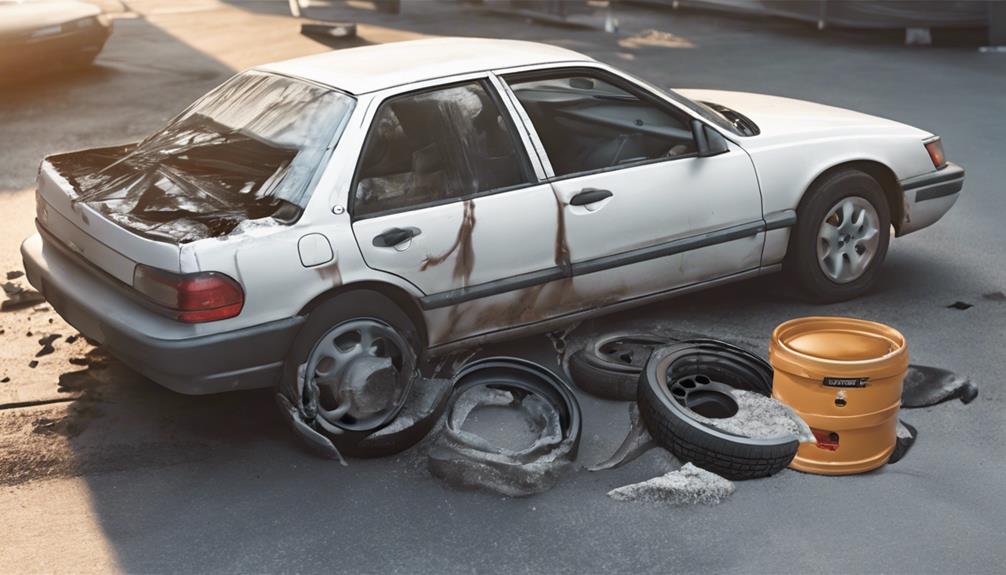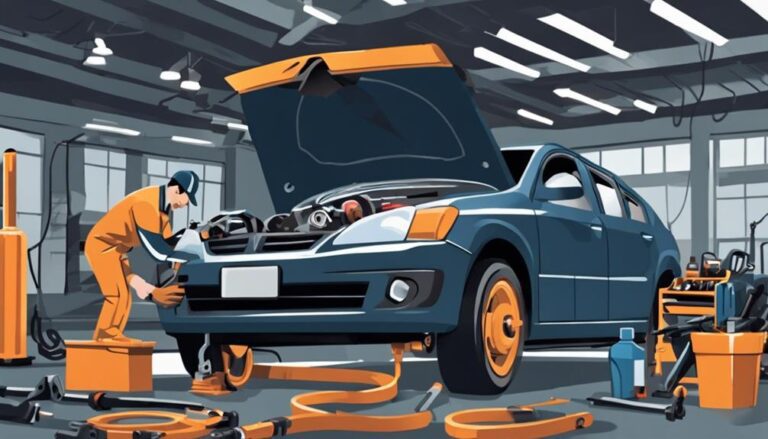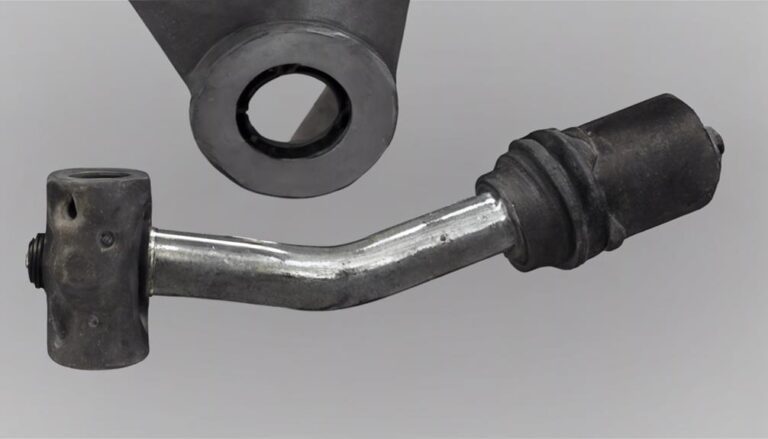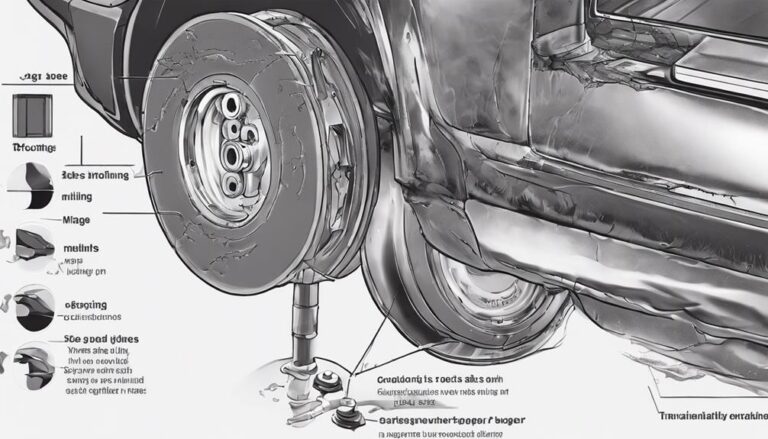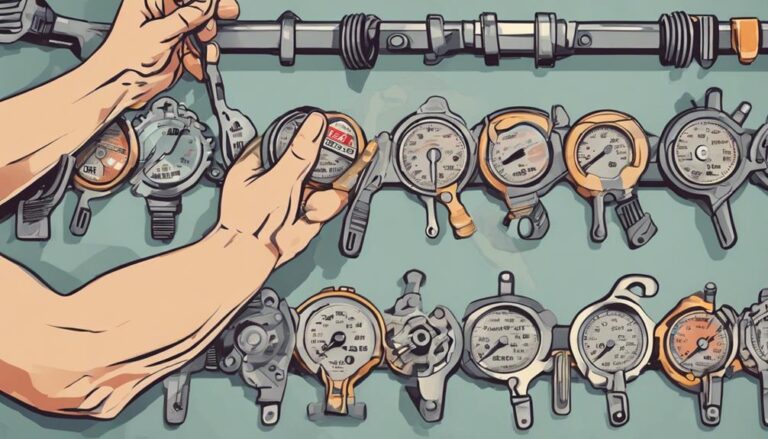5 Best Indicators of a Failing Suspension System
When your car starts pulling to one side unexpectedly, it could be more than just a road condition causing it. You might notice this happening, and also feel every bump more than usual, indicating a deeper problem.
But what other signs should you be on the lookout for that could signal a failing suspension system? Stay tuned to uncover the remaining three crucial indicators that could impact your driving experience and safety on the road.
Key Takeaways
- Steering system instability impacts vehicle control and safety.
- Tire wear symptoms indicate alignment and suspension issues.
- Leakage around shocks or struts compromises performance.
- Ride quality indicators like noise and bouncing signal suspension problems.
Steering Wheel Feels Unstable
If your steering wheel feels shaky or unstable, it could be a clear indication of underlying suspension issues. Steering wheel alignment issues or problems with steering wheel responsiveness can lead to this unsettling sensation. When the suspension system components aren't functioning correctly, vibrations and wobbling can be felt through the steering wheel, affecting your control over the vehicle.
Unstable steering not only compromises your driving experience but also impacts the overall safety on the road. It's crucial to address these issues promptly to prevent further damage to the suspension system. Ignoring these signs can result in more severe problems and potentially hazardous situations.
Excessive Tire Wear
Excessive tire wear is a common indicator of a failing suspension system, often manifesting as cupping or scalloping on the tires. When your suspension is not functioning correctly, alignment issues can cause uneven tire wear on the inside or outside edges. This uneven wear is a red flag for suspension problems that need attention. Worn-out suspension components can lead to handling problems and premature tire replacement due to abnormal wear patterns.
To better understand the relationship between excessive tire wear and suspension issues, let's delve into a comparison:
| Indicator | Excessive Tire Wear |
|---|---|
| Common Sign | ✔ |
| Alignment Issues | ✔ |
| Handling Problems | ✔ |
Monitoring your tire wear regularly is crucial in detecting suspension issues early on. By addressing these problems promptly, you can prevent further damage to your suspension system and ensure a safer driving experience.
Leakage Around Shocks or Struts
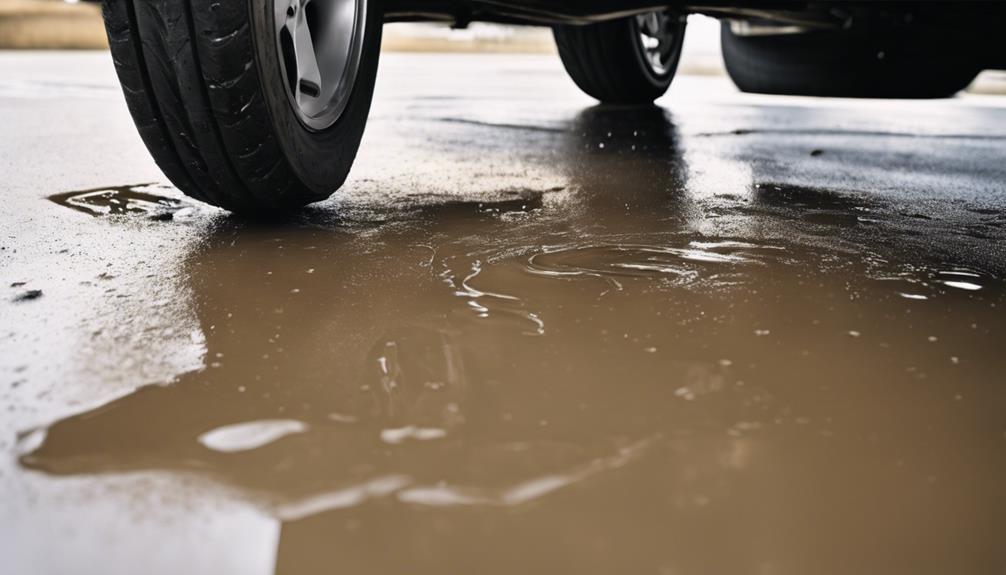
Leakage around shocks or struts indicates potential suspension system issues that require attention. The presence of fluid around these components may stem from seal deterioration or internal damage. This fluid loss can lead to suspension problems, compromising the vehicle's performance and ride comfort.
Addressing these leaks promptly is crucial to prevent further damage to the shocks or struts. Regularly inspecting these areas for any signs of leakage is advisable to maintain optimal safety and performance levels in your vehicle. By staying vigilant and addressing any leaks early on, you can mitigate the risk of more severe suspension issues down the road.
Be proactive in checking for any fluid seepage around your shocks or struts to ensure a smooth and safe driving experience.
Uncomfortable Ride Quality
When your vehicle's suspension system is failing, you may notice a significant decline in ride comfort characterized by increased vibrations and jolts. This discomfort can make your driving experience less enjoyable and more fatiguing. Here are some key indicators to help you identify issues with your suspension system related to uncomfortable ride quality:
| Indicator | Description |
|---|---|
| Suspension noise | Strange noises like clunks or squeaks while driving could signal worn-out suspension components. |
| Vibration issues | Excessive shaking or vibrating felt through the steering wheel or seats may indicate suspension problems. |
| Bouncing and swaying | If your car bounces excessively over bumps or feels unstable when turning, it might be due to suspension issues. |
| Unpredictable handling | Difficulty controlling the vehicle, especially around corners, can be a sign of a failing suspension system. |
| Tire wear | Uneven tire wear, especially on the edges, could result from poor suspension performance affecting alignment. |
Recognizing these signs promptly can help you address suspension problems before they escalate and ensure a smoother and safer driving experience.
Car Bounces Post Speed Bumps

Experiencing noticeable bouncing in your vehicle after traversing speed bumps can indicate potential suspension system issues that require inspection. When your car bounces excessively over speed bumps, it suggests that the shocks or struts may be worn out, compromising their ability to absorb impacts effectively. A well-maintained suspension system should provide a smooth ride over speed bumps without significant bouncing.
Persistent bouncing post speed bumps not only leads to passenger discomfort but also signals the urgent need for suspension inspection. Addressing bouncing problems promptly is crucial to maintaining vehicle stability, comfort, and overall safety on the road.
Furthermore, ignoring bouncing issues can result in adverse effects on vehicle handling and road grip, potentially leading to safety hazards. If left unchecked, these problems may escalate and manifest as suspension noises or alignment issues. Therefore, it's vital to address any bouncing concerns promptly to ensure optimal suspension performance and a safe driving experience.
Frequently Asked Questions
What Signs Indicate a Problem With the Suspension System?
When it comes to signs of suspension issues, common symptoms include pulling to one side, feeling every bump, lower corner of the car, difficulty steering, and greasy shock absorbers. These warning signs can indicate problems with your suspension system.
How Can I Tell if My Suspension Is Bad?
If you suspect a bad suspension, watch for common symptoms like a bumpy ride and uneven tire wear. Conduct a visual inspection for leaks, damaged components, and signs of wear. Your safety depends on a reliable suspension system.
What Are the 5 Steps to Diagnose Problems With Suspension System?
To diagnose suspension problems, start by checking for alignment issues. Inspect shock absorbers for leaks and listen for clunking noises. Observe tire inflation and weight changes. If you hear creaking or squealing, have a mechanic inspect it promptly.
When Checking the Suspension System What Constitutes a Failure?
When checking the suspension system, a failure is akin to a ship without a rudder. Common causes include worn-out components, leaks, and misalignment. Through meticulous visual inspection, anomalies in shocks, springs, and bushings reveal the system's compromised integrity.
Conclusion
In summary, recognizing the signs of a failing suspension system is crucial for maintaining vehicle safety.
From steering instability to excessive tire wear, leakage around shocks or struts, uncomfortable ride quality, and bouncing after speed bumps, these indicators shouldn't be ignored.
Regular inspection and prompt action can prevent costly repairs and ensure a smooth driving experience.
Remember, addressing suspension issues swiftly saves stress and safeguards your vehicle's stability.

